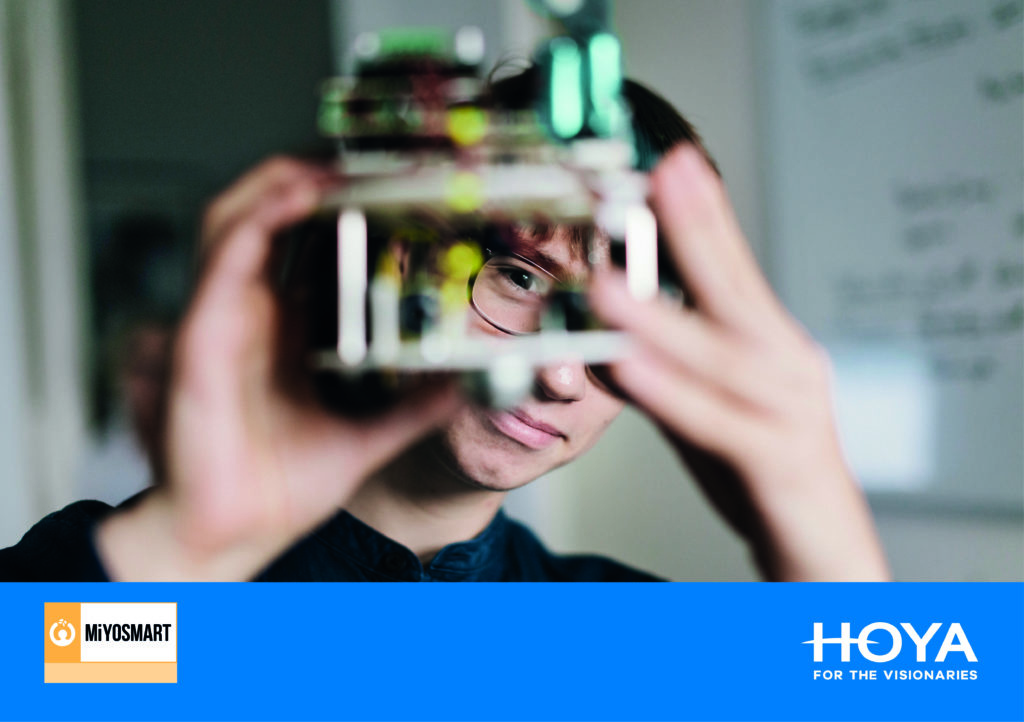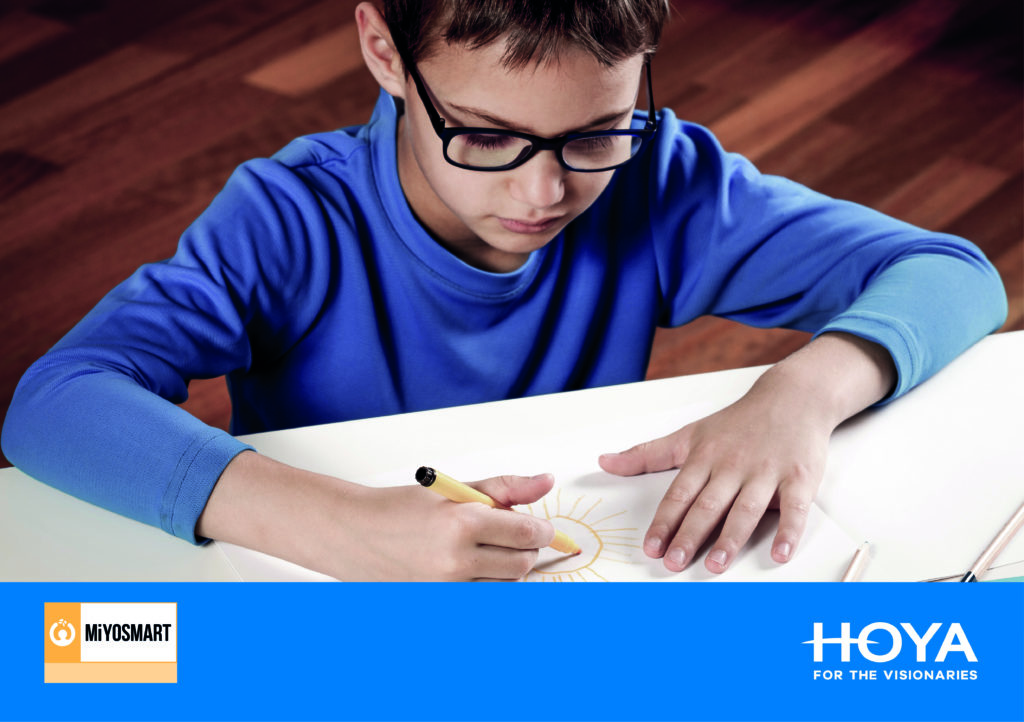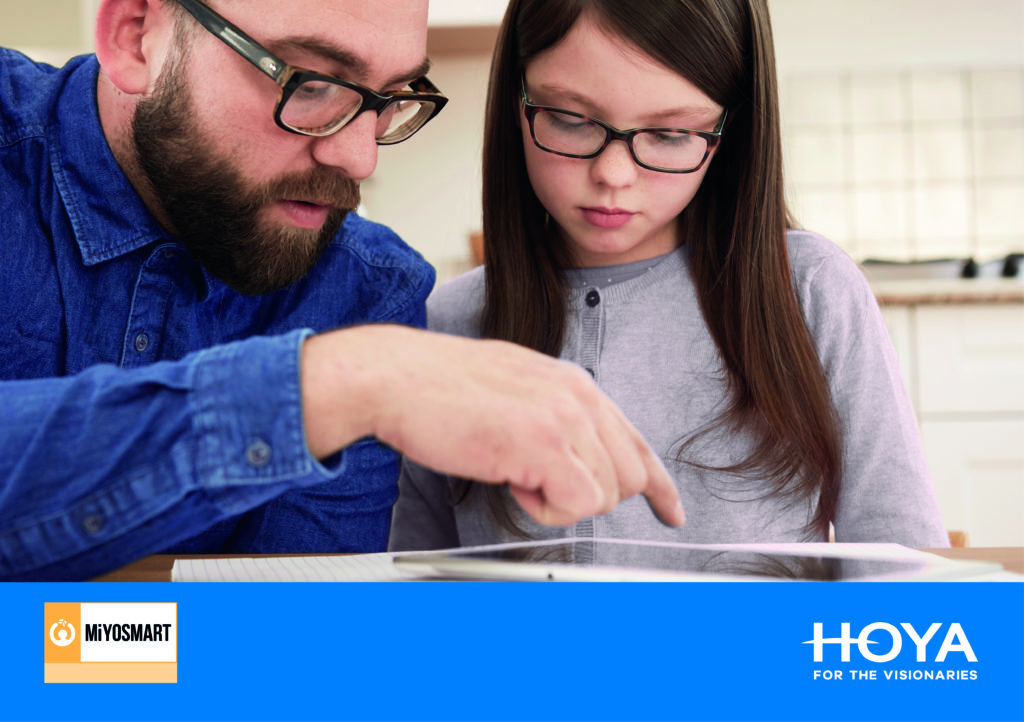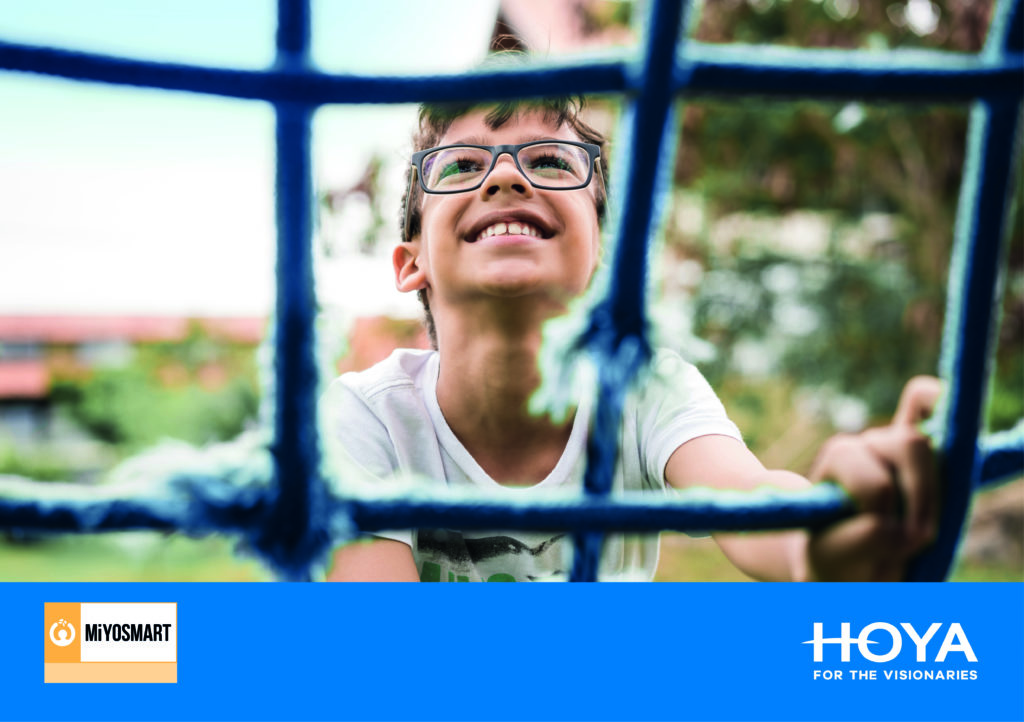Myopia - prevalence in children
Myopia (or nearsightedness) is a common vision problem that often begins between the ages of 6 and 14. It affects up to 5% of preschoolers, about 9% of school-aged children, and nearly 30% of adolescents.


How myopia develops
With myopia, the eye is longer than normal from front to back, or the cornea (the clear window at the front of the eye) is too steeply curved. This makes things that are far away from you look blurry.
Childhood-onset myopia is most commonly caused by the eyes growing too quickly, or continuing to grow after age 10-12 when eye growth should normally cease. Genetics, environment, and the individual’s characteristics can all contribute to this excess growth
What causes myopia
Spending more time on close work has been linked to the development of myopia, such as reading, playing computer games, drawing, or using smartphones and tablets.
Electronic hand-held devices are easy for toddlers to use resulting in increased exposure to close work at a younger age.
Myopia can be hereditary, and a person’s ethnicity and family background can increase the risk.
A person with one short-sighted parent has three times the risk of developing myopia – or six times the risk if both parents are short-sighted.

Symptoms of myopia include
- Complaints of blurry vision (like not being able to see the board in school)
- Squinting to try to see better.
- Frequent eye rubbing.
- Frequent headaches.

How do the COVID-19 pandemic lockdowns worsen myopia in children
The COVID-19 pandemic has led to many schools becoming virtual. That means kids have been spending more time on screens and close-up work. Social distancing measures and staying home also equals less time that many children spend outside. These factors have doctors concerned about the potential for a big increase in myopia in children. To help lower the risk of myopia, especially during the pandemic, encourage your child to take frequent breaks from close-up work, spend daily time outside when possible, and limit recreational screen time.
What is myopia control or myopia management
Myopia cannot be reversed or cured, but it can be treated. The goals of treatment are to improve your child’s vision and prevent it from getting worse. This is important for protecting their eye health in the future, even if they still need glasses or contact lenses.
Wearing a lens made to the child’s prescription will ensure light is focused onto the back of their eye (retina) correctly so distant objects don’t appear as blurry. Taking into account that the thickness and weight of the lenses will depend on how short-sighted the kid is.
The children’s eyesight often changes as they get older, which means they may eventually need to use 2 pairs of glasses: 1 pair for close vision activities such as reading, and the other pair for distance vision activities, such as watching television.
Some parents prefer their kids to use bifocal lenses that allow them to see objects clearly that are both closeup and far away without changing their glasses. Some others, choose to get multifocal lenses that help to see nearby objects and those at middle and long distances (varifocal glasses).
How a Digital Centration Device (DCD) can help
Since pediatric dispensing requires a different approach and more specialist skills. Any errors in dispensing will have a more profound effect (like accelerating the progression of myopia) and children are not always able to communicate if something is uncomfortable or impacting their vision.
A child’s face is not just a scaled-down version of an adult’s face. There are various of anatomical differences which should be considered in the choice of frame.
The main differences are:
- Reduced crest height
- Larger frontal angle
- Widened splay angle (the angle of the pad bridge)
- Smaller bridge projection
- Smaller head and temple width
- Less pantoscopic tilt
A DCD can provide the ECP (dispensing optician or optometrist) with the most accurate and precise measurements in order to give the best possible fit, cosmetic appearance, and visual outcome. It will definitely provide a positive experience for the child.
A piece of equipment such as the visuReal Master can make the dispensing measurement process easy, fast, and efficient. Since there is only a small window of opportunity to try on frames before the child loses concentration.
Remember that, as with adults, one pair of spectacles often does not meet the child’s lifestyle requirements: sports, hobbies, light protection, safety, and use of digital devices–all should be considered and the appropriate frames and lenses recommended.
For more information or to address specific inquiries regarding our visuReal digital centration systems, please feel free to contact us.
Photo source: Hoya Lens, artwork for MiYOSMART spectacl lens for chilren